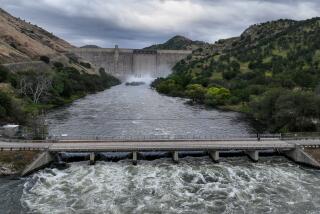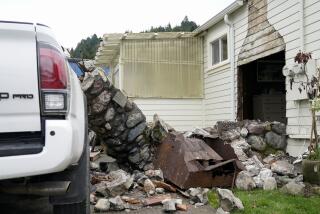Keeping an Eye on the Weather
How’s the weather? It depends on whom you ask. Satellite photos may show a Pacific Northwest cold front. Doppler radar can pick up a storm 150 miles away. And to get the San Fernando Valley weather picture, a handful of ground stations and 30 to 40 sets of eyeballs can tell you how the weather is from ground level.
The ground stations are in Woodland Hills and at Burbank and Van Nuys airports, and the eyeballs belong to the National Weather Service’s army of weather spotters. The weather service depends on spotters--who volunteer their time and equipment--to fill in the Valley’s weather picture. Nearly every Valley community has spotters.
There are more than 500 spotters in Southern California. About 200 spotters are in Los Angeles County, an increase from 150 a year ago. Last winter’s storms generated a marked interest in weather, said meteorologist Tim McClung.
McClung said the information provided by the volunteers is invaluable. “We have the technology with satellites to watch clouds and Doppler to watch storms, but we also need surface ground information. We do have wind and rain gauges out there, but it’s helpful to have 500-plus sets of eyes watching the ground. It gives us the last piece to our warning puzzle.”
The weather service is so dependent on its spotters, said McClung, that it will issue a weather warning based on spotters’ reports.
The only requirement to become a spotter is an interest in weather and basic training provided by the weather service. The level of interest varies from home weather stations with a simple $5 plastic rain gauge and wind sock to a $500-plus climatic station.
Polar-orbiting Satellite
* Satellites provide national and global pictures of cloud patterns. Geostationary satellites move in unison with the Earth’s rotation, while polar-orbiting satellites circle the Earth at an altitude of 500 to 900 miles. Satellites can monitor developing storms and determine wind direction and speed.
Doppler Weather Radar
* Radar monitors storms and is used for short-term forecasts. The Doppler radar can pick up storm clouds up to 150 miles away, and can discern moisture content and wind patterns inside clouds.
Ground Weather Radar
* Surface stations monitor conditions from the ground. The National Weather Service relies on reports from fixed Valley stations, such as the new one at Cal State Northridge. CSUN provides the weather service with 4 p.m. high and low temperatures and rainfall amount.
How a UV Pyranometer Works
The CSUN ground weather station has one of Southern California’s only UV pyranometers.
* The shortest ultraviolet rays--called UVB--that make it through the upper-level atmosphere are the most dangerous in terms of skin damage. The UV pyranometer measures these rays and their effects on skin.
* Ultraviolet radiation enters through glass dome, passing through several filters.
* Radiation is converted from shorter, invisible wavelengths, which can’t be measured, to longer, visible wavelengths, which can be measured.
Outfitting a Home Weather Station
RAIN GAUGE
Rain gauges range from a simple plastic gauge, in which rain is captured and measured in a cylinder, to the more expensive model shown. It works by funneling rain into tipping bucket. When one of the tipping cups fills with 1/100-inch of rain, it tips, tripping a wire that sends a pulse of electricity to a data logger.
PRICE RANGE: $95-$700.
ANEMOMETER
Wind catches in plastic cups, spinning them around. Wind speed is registered on front dial. Home spotters might use either a compass or wind vane to determine wind direction.
PRICE RANGE: $30-200.
BAROMETER
The aneroid type has a clock-like face. An internal diaphragm compresses or expands as it detects changes in air pressure. Generally, falling or low pressure indicates stormy weather, while rising or high pressure indicates fair weather. Markings on barometer stand for air pressure in millibars, and air pressure in pounds per square inch.
PRICE RANGE: $100-$500
PSYCHROMETER
Measures air temperature and relative humidity. Consists of a slide rule and two thermometers on a hinged frame, with muslin cloth covering the bulb of one thermometer. Relative humidity is determined by using the temperatures of the thermometers and the slide rule.
PRICE RANGE: $40-100.
Sources: Tim Boyle, Cal State Northridge geography department; National Weather Service; Davis Instruments; Yankee Environmental Systems, Inc.
Researched by JULIE SHEER / Los Angeles Times
More to Read
Sign up for Essential California
The most important California stories and recommendations in your inbox every morning.
You may occasionally receive promotional content from the Los Angeles Times.










